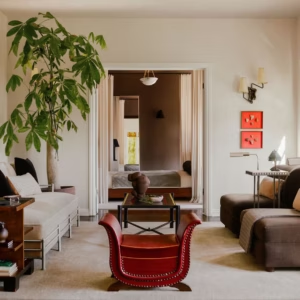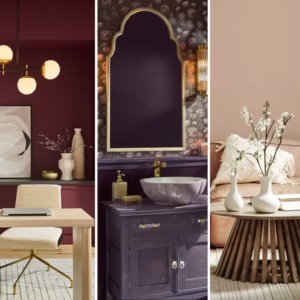What is Modern Interior Design?
Modern interior design refers to a design movement that emerged in the early to mid-20th century, characterized by minimalism, clean lines, and a functional approach. It emphasizes simplicity and avoids excessive ornamentation while incorporating innovative materials and techniques.
Key Features of Modern Interior Design
- Simplicity and Functionality:
- Modern design focuses on creating spaces that are not only aesthetically pleasing but also highly functional. Furniture and decor are chosen for their practicality.
- Clean Lines:
- One of the hallmarks of modern design is the use of straight lines and geometric shapes. Furniture pieces have a streamlined appearance, often with smooth surfaces.
- Neutral Color Palettes:
- Modern interiors typically employ a neutral color palette with shades like white, gray, beige, and black. These are often complemented by bold accent colors for contrast.
- Use of Natural Materials:
- Materials such as wood, metal, glass, and stone are commonly used. The organic textures and finishes add warmth and depth to the otherwise minimalist space.
- Emphasis on Space:
- Modern design often incorporates open floor plans that allow for a fluid connection between spaces. This openness creates a sense of spaciousness and encourages natural light to flow through.
- Minimalism:
- The principle of “less is more” is fundamental in modern interior design. Clutter is avoided, and fewer decorative items are used, promoting a clean and serene environment.
- Innovative Lighting:
- Lighting plays a crucial role, with a preference for natural light through large windows. Artificial lighting is also sleek and unobtrusive, using fixtures that complement the overall design.
Modern Design Principles
- Balance: Creating visual stability through symmetrical or asymmetrical arrangements of furniture and decor.
- Contrast: Using different textures, colors, or shapes to highlight specific design elements and create visual interest.
- Scale and Proportion: Ensuring that furniture and decor are appropriately sized relative to the space.
- Harmony: Achieving a cohesive look by coordinating colors, materials, and styles across the space.
Current Trends in Modern Interior Design
- Sustainable Design:
- A growing focus on eco-friendly materials and energy-efficient solutions, incorporating sustainable practices in both new builds and renovations.
- Biophilic Design:
- Bringing the outdoors inside through the use of plants, natural light, and organic materials to create a connection to nature.
- Smart Home Technology:
- Integrating technology into spaces with smart lighting, temperature controls, and automated systems that enhance comfort and functionality.
- Mixed Materials:
- Combining various materials, such as wood with metal or glass, to create interest and texture within the design.
- Vintage and Retro Influences:
- Incorporating vintage pieces or mid-century modern furniture to add character and personality to contemporary spaces.
Tips for Achieving a Modern Look
- Choose Quality over Quantity: Invest in fewer, high-quality pieces that make a statement rather than filling a space with numerous items.
- Declutter: Keep surfaces clear of unnecessary items. Use effective storage solutions to maintain a clean appearance.
- Mix Functionality with Style: Select furniture that serves a purpose while also contributing to the overall aesthetics.
- Incorporate Art: Choose a few key art pieces that resonate with you and fit the modern aesthetic, helping to personalize the space without overwhelming it.


